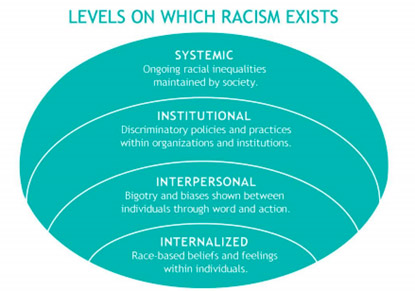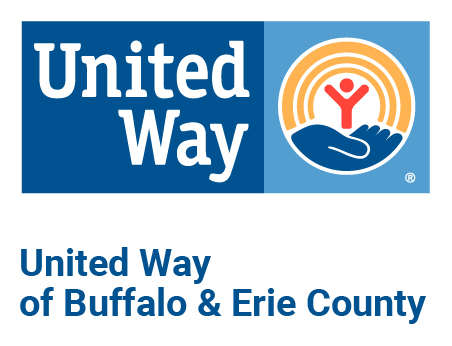
Day 5: Levels of racism
A common misconception about racism in our country is that racism is limited to personal prejudice and intentional bias in our individual interactions across different races. Another misconception is that being racist is a binary, either-or status: either someone is 100% racist (and therefore “bad”), or 100% not-racist (and therefore “good”). For people who mistakenly think that being racist is a binary status, it can be upsetting to hear that they have said or done something racist.
More accurately, racism exists on multiple levels, and includes any policies, actions (including inactions), words, and thoughts which result in racially inequitable outcomes, whether malicious intent is present or not. Also, racism is so pervasive within American society that it is very difficult, if not impossible, for anyone who grew up in the United States, including BIPOC, to be 100% free of internalized racism. And intentional interpersonal racism between individuals is actually a symptom of a larger system of racism: an array of cultural norms and institutional policies and practices that routinely produce racially inequitable outcomes, often without individual intent or malice.
Change requires an awareness of the levels of racism, a commitment to self-reflection, and a collective will to address people, organizations, and systems to break down barriers that have been built over hundreds of years.

TODAY'S CHALLENGE:
- Read more about the Four Levels of Racism from Race Forward. (2 minutes)
- Watch "Systemic Racism Explained" from Act. TV. (4 minutes)
- Check out this short video from Race Forward about the levels and the importance of looking at systemic, not simply individual, racism. (4 minutes)
